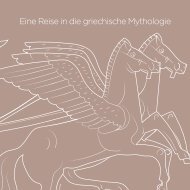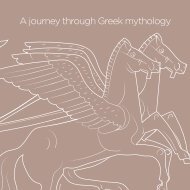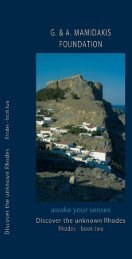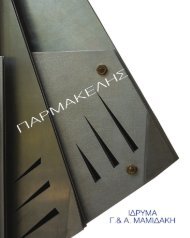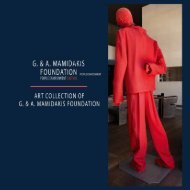EASTERN CRETE
Discover the unknown Crete. Easter Crete, Book one G&A MAMIDAKIS FOUNDATION
Discover the unknown Crete. Easter Crete, Book one
G&A MAMIDAKIS FOUNDATION
Create successful ePaper yourself
Turn your PDF publications into a flip-book with our unique Google optimized e-Paper software.
C H A P T E R 2<br />
Malia<br />
Golden bee<br />
pendant from<br />
the Chryssolakos<br />
cemetery at Malia<br />
Right on the border between the<br />
Prefectures of Lasithi and Heraklion the vast<br />
archaeological area of Malia stretches out,<br />
with its grand Minoan palace, second only<br />
to Knossos and Phaestos. Tradition has it<br />
that Malia was the residence of Sarpedon,<br />
the younger brother of Minos and<br />
Rhadamanthus, all born of the union of Zeus<br />
and Europa.<br />
Stone kernos for<br />
ritual offerings at<br />
the Palace of Malia<br />
The most ancient part of the palace<br />
dates back to the Middle Minoan period<br />
(circa 2000 B.C.) but of that era there remain<br />
few traces because the site was destroyed by<br />
a violent earthquake and completely rebuilt<br />
in around 1650 B.C.. Smaller than Knossos<br />
and Phaestos, but for this no less interesting<br />
in its structure and functions - religious,<br />
political and economic - the palace complex<br />
ceased to "live" in 1450 B.C. after a<br />
devastating fire. The site was discovered<br />
in 1915 by the Greek archaeologist Joseph<br />
Hadjidakis, while from the 1950s onwards<br />
the excavations have continued with the<br />
French Archaeological School of Athens<br />
under the direction of Henri van Effenterre.<br />
Opening off the great Central Court,<br />
with an altar set into the paving, there are<br />
a series of rooms essential to court life<br />
50






